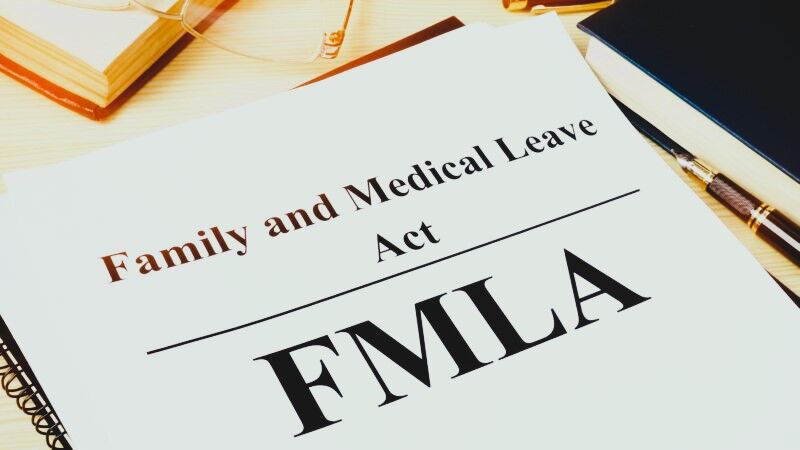Legislators calling for expansion and reform to the three decades-old law include getting rid of an FMLA loophole that excludes some 35 million workers from coverage.
States eye workforce as a legislative priority
On February 5, 2023, the U.S. Department of Labor (DOL) announced its efforts to celebrate the 30th anniversary of the Family and Medical Leave Act (FMLA) with nationwide events that included interagency outreach and collaboration and the launch of a dedicated webpage with new and updated resources [DOL News Release, 23-3-NAT, 02/06/2023].
This program has certain requirements for eligibility that are not without issue when it comes to a possible loophole regarding the number of employees at a worksite and the distance between worksite locations. Several legislators acknowledged the FMLA’s milestone with calls to expand the program with provisions that would include paid leave.
Unpaid time off
The Family and Medical Leave Act (FMLA) is a federal law enacted in 1993 that provides eligible employees of covered employers (50 or more employees) with unpaid, job-protected leave for specified family and medical reasons. Eligible employees may take up to 12 work weeks of leave in a 12-month period for certain reasons (see Checkpoint Payroll Guide ¶20,260 et seq for further information on the FMLA).
Qualifying
To qualify for FMLA, a worker must: (1) have worked for their employer for at least one year; (2) have worked at least 1,250 hours for their employer in the past year; and (3) work for an employer that has at least 50 employees within a 75-mile radius.
Employer requirements
In addition to providing eligible employees an entitlement to leave, the FMLA requires that employers maintain employees’ health benefits during leave and restore employees to their same or an equivalent job after they return from leave. The law sets requirements for notice, by both the employee and the employer, and provides employers with the right to require certification of the need for FMLA leave in certain circumstances.
The law protects employees from interference and retaliation for exercising or attempting to exercise their FMLA rights. The law also includes certain employer recordkeeping requirements.
Remote worker loophole
Under current law, all worksites with at least 50 employees within a 75-mile radius must comply with FMLA. Any worksite that does not meet those standards is exempt. This means it is possible for an employer with several worksites and hundreds or thousands of employees to be exempt from the FMLA requirements if those worksites are outside of the 75-mile radius and each worksite employs fewer than 50 employees.
Under 29 C.F.R. §825.111, a worksite for FMLA purposes can refer to either a single location or a group of contiguous locations. The offices of each employer are considered separate sites of employment for purposes of FMLA. An employee’s worksite under FMLA will ordinarily be the site the employee reports to or, if none, from which the employee’s work is assigned.
However, this potential loophole in FMLA coverage would not apply to remote workers. As 29 C.F.R. §825.111 explains, “an employee’s personal residence is not a worksite in the case of employees…who work at home, as under the concept of flexiplace or telecommuting.” So, when many more employees were working remotely during the COVID-19 pandemic, their eligibility was not affected for coverage under the FMLA. The DOL recently released a Field Assistance Bulletin further clarifying how the FMLA is to be applied to remote workers.
Legislators talk expansion
On February 1, 2023, several Democratic legislators from the House of Representatives and Senate held a press conference to announce a legislative package to establish a paid family and medical leave program and expand and modernize the 30-year-old FMLA.
FAMILY Act. Congresswoman DeLauro (D-CT) and Senator Kirsten Gillibrand (D-NY) are the authors of the FAMILY Act, which would establish the nation’s first national paid family and medical leave program. The legislation would require paid leave for both full-time and part-time workers (and self-employed).
Job Protection Act. Congresswoman Lauren Underwood (D-IL) and Tina Smith (D-MN) are the sponsors of the Job Protection Act, which would close gaps in FMLA coverage and expand protections to workers for smaller employers. It would also protect part-time workers and ensure those changing jobs or returning to the workforce would be able to access leave.
This legislation specifically addresses the leave loophole and would eliminate the requirement that a workplace have 50 or more employees within a 75-mile radius. According to a fact sheet on the bill, this excludes an estimated 35 million workers.
FMLA anniversary legislation and beyond
Payroll on Checkpoint offers a variety of resources on the FMLA, from federal analysis to state coverage of unpaid FMLA. Plus, coverage of state Paid Family and Medical Leave Insurance programs including contribution rates, wage base limits, startup dates, and more.








